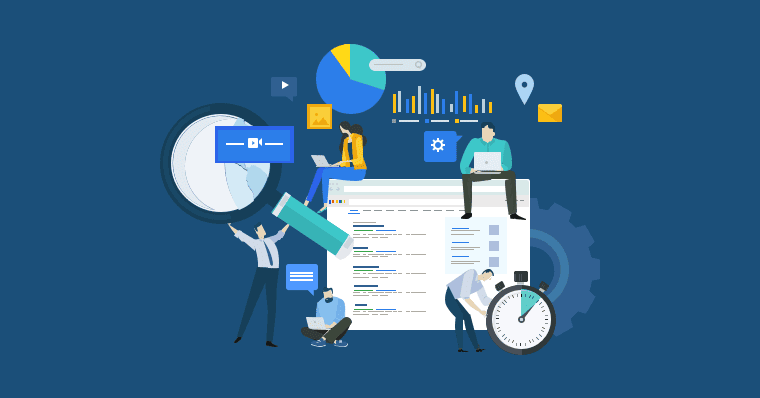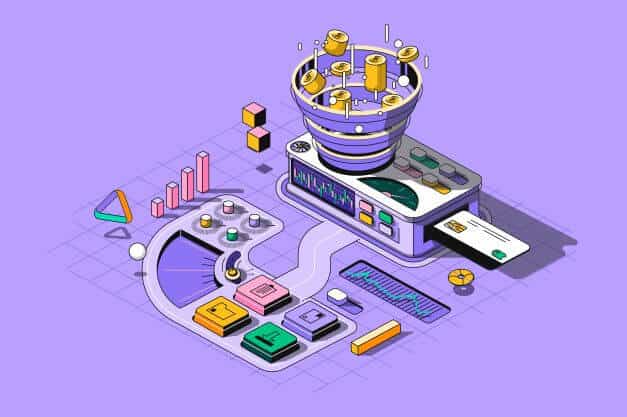In the world of search engine optimization (SEO), on-page optimization and SEO Techniques are crucial for driving traffic to your website. By optimizing your website’s content, you can improve your rankings on search engine results pages (SERPs), attract more visitors, and increase conversions. In this guide, we’ll explore several on-page SEO techniques that you can use to optimize your content for search engines and drive more traffic to your website.
On-Page SEO Techniques Friendly Headlines: How to Optimize Your Content for Search
Headlines are one of the most important on-page optimization factors that impact your website’s visibility on search engines. A compelling headline can attract users’ attention and encourage them to click through to your website. Here are some tips for crafting SEO-friendly headlines:
Use relevant keywords: Your headline should include relevant keywords that describe your content and match users’ search queries. This will help search engines understand what your content is about and show it to users who are looking for that topic.
Keep it concise: Your headline should be short and to the point. Avoid using long and complicated headlines that may confuse users and make it difficult to understand what your content is about.
Use numbers and data: Using numbers and data in your headline can make it more appealing to users and help them understand the benefits of your content.
Make it unique: Your headline should be unique and stand out from the competition. Avoid using generic or cliched headlines that do not add any value to users.
Use action words: Using action words in your headline can create a sense of urgency and encourage users to click through to your website.
Meta Tags: A Guide to Optimizing Your Content for Search Engines
Meta tags are HTML elements that provide information about your website’s content to search engines. By optimizing your meta tags, you can improve your website’s visibility on search engines and attract more visitors. Here are some best practices for optimizing your meta tags:
Use relevant keywords: Your meta tags should include relevant keywords that describe your content and match users’ search queries. This will help search engines understand what your content is about and show it to users who are looking for that topic.
Keep it concise: Your title tag should be 50-60 characters and your meta description should be 155-160 characters. This will help search engines display your content properly and avoid truncating your title or description.
Use compelling language: Your meta tags should be written in a way. This entices users to click through to your website. Use action words, numbers, and data to make your content more appealing to users.
Now Use schema markup: Schema markup is a structured data format that provides additional information about your content. By using schema markup, you can enhance your website’s visibility on search engines and attract more visitors. On-Page SEO Techniques
High-Quality and SEO-Optimized Content: Crafting Content That Ranks
Creating high-quality content that is optimized for search engines is essential for improving your website’s visibility and attracting more visitors. Here are some tips for crafting SEO-friendly content:
Use relevant keywords: Your content should include relevant keywords that describe your topic and match users’ search queries. This will help search engines understand what your content is about and show it to users.
Use header tags: Header tags (H1, H2, H3, etc.) can help organize your content and make it easier to read. Use header tags to break up your content into sections and include relevant keywords in your headers.
Optimize your images: Optimizing your images for search engines can improve your website’s visibility and attract more visitors. Use descriptive file names, alt tags, and captions that include relevant keywords to describe your images. On-Page SEO Techniques
Use internal links: Internal links can help users navigate your website and improve your website’s visibility on search engines. Now Use internal links to connect related content on your website and include relevant anchor text.

The Art of Creating SEO-Friendly Images: Enhancing Your Content and Driving Traffic
Images are a great way to enhance your content and improve user engagement on your website. By optimizing your images for search engines, you can improve your website’s visibility and attract more visitors. Here are some tips for creating SEO-friendly images:
Use descriptive file names: Your image file names should be descriptive and include relevant keywords that describe your image. This will help search engines understand what your image is about and show it to users who are looking for that topic.
Use alt tags: Alt tags provide alternative text for users who cannot see your images. Include relevant keywords in your alt tags to describe your images and improve your website’s visibility on search engines.
Use captions: Captions can provide additional context for your images and improve user engagement. Use captions to describe your images and include relevant keywords.
Compress your images: Compressing your images can improve your website’s loading speed and user experience. Use image compression tools to reduce the file size of your images without sacrificing quality.
Boost Your Rankings with Proper Internal Linking On-Page SEO Techniques
Internal linking is an important on-page optimization factor that can help improve your website’s visibility on search engines and drive more traffic to your website. Here are some tips for using proper internal linking techniques:
Identify internal linking opportunities: Look for opportunities to connect related content on your website and include internal links to improve user navigation and search engine visibility.
Prioritize internal linking: Prioritize internal linking to important pages on your website to improve their visibility on search engines and drive more traffic to those pages.
Use relevant anchor text: Use relevant anchor text that includes relevant keywords to describe the content you are linking to. This will help search engines understand what your content is about and show it to users who are looking for that topic.
Mobile Optimization: Why It Matters for On-Page SEO Techniques and How to Optimize Your Website
Mobile optimization is an essential on-page optimization factor that can improve your website’s visibility on search engines and enhance user experience. Here are some tips for optimizing your website for mobile devices:
Test your website’s mobile-friendliness: Use mobile optimization tools to test your website’s mobile-friendliness and identify areas for improvementu utilizing On-Page SEO Techniques
Design a mobile-friendly website: Design a website that is responsive and can adapt to different screen sizes and resolutions. This will improve user experience and reduce bounce rates.
Optimize your content for mobile devices: Optimize your content for mobile devices by using short paragraphs, simple language, and easy-to-read fonts.
Social Media Optimization: Using Social Media to Boost Your On-Page SEO Techniques
Social media can play an important role in improving your website’s visibility on search engines and driving more traffic to your website. Here are some tips for using social media to boost your SEO:
Share and promote your content on social media: Share your content on social media platforms to attract more visitors and increase engagement.
Optimize your social media profiles: Optimize your social media profiles by including relevant keywords, a link to your website, and high-quality images.
Use social media analytics tools: Use social media analytics tools to track your social media performance and identify opportunities for improvement.
Analytics and Tracking: How to Measure and Improve Your SEO Performance
Measuring and improving your SEO performance is essential for achieving your website’s goals and driving more traffic to your website. Here are some tips for measuring and improving your SEO performance:
Use Google Analytics for On-Page SEO Techniques tracking: Use Google Analytics to track your
website’s traffic, user behavior, and other important metrics. This will help you understand how your website is performing and identify opportunities for improvement using On-Page SEO Techniques.
Set up goals and conversions: Set up goals and conversions in Google Analytics to track important user actions, such as form submissions or product purchases. This will help you understand how users are interacting with your website and identify areas for improvement.
Monitor and analyze your SEO metrics: Monitor and analyze your website’s SEO metrics, such as keyword rankings, backlinks, and organic traffic. Use SEO analytics tools to track your progress and identify opportunities for improvement.
Make data-driven decisions: Use your website’s analytics and tracking data to make data-driven decisions about your SEO strategy. Use A/B testing to experiment with different strategies and identify the most effective ones.
On-Page SEO Techniques Conclusion
On-page SEO techniques are essential for improving your website’s visibility on search engines and driving more traffic to your website. By optimizing your content, meta tags, images, internal linking, and mobile optimization, you can improve your website’s search engine rankings and attract more visitors. Additionally, using social media optimization and analytics and tracking tools can help you measure and improve your SEO performance. By following these on-page SEO techniques, you can achieve your website’s goals and drive more traffic to your website.










